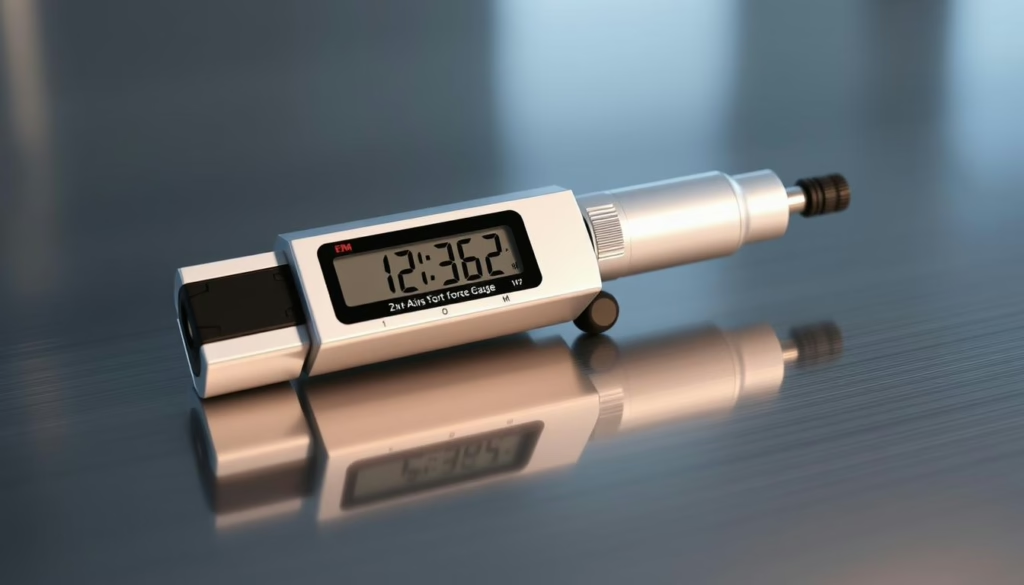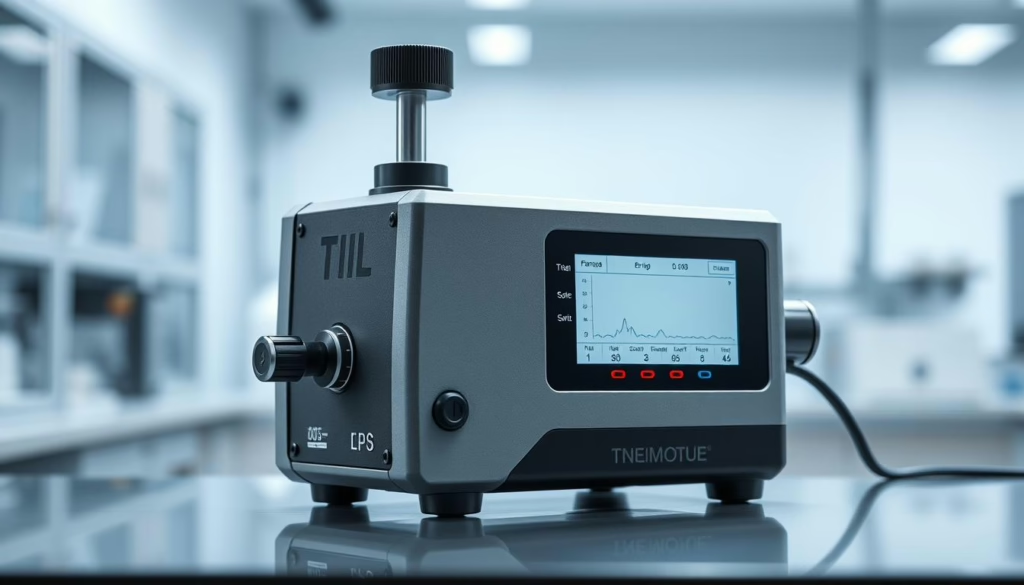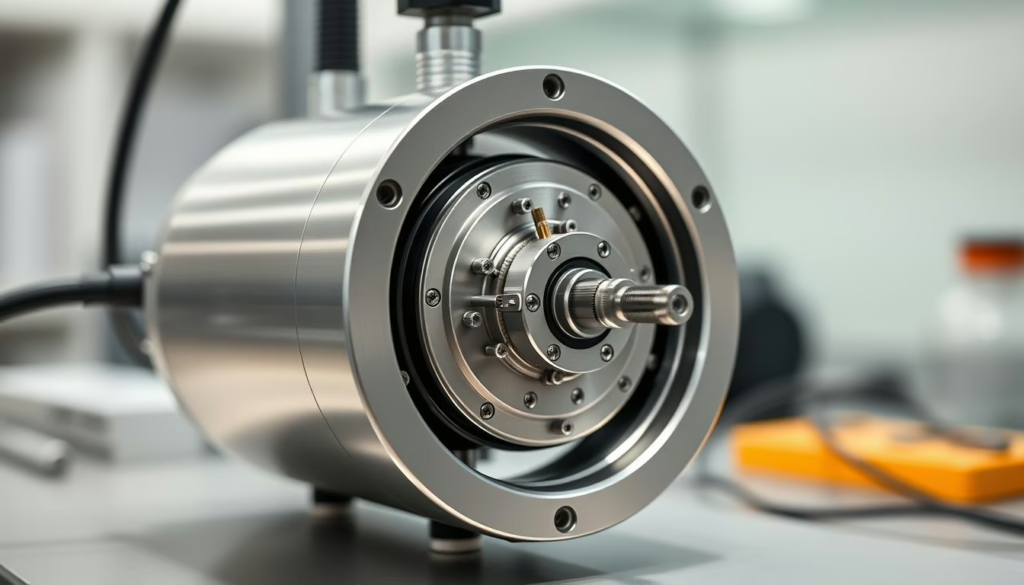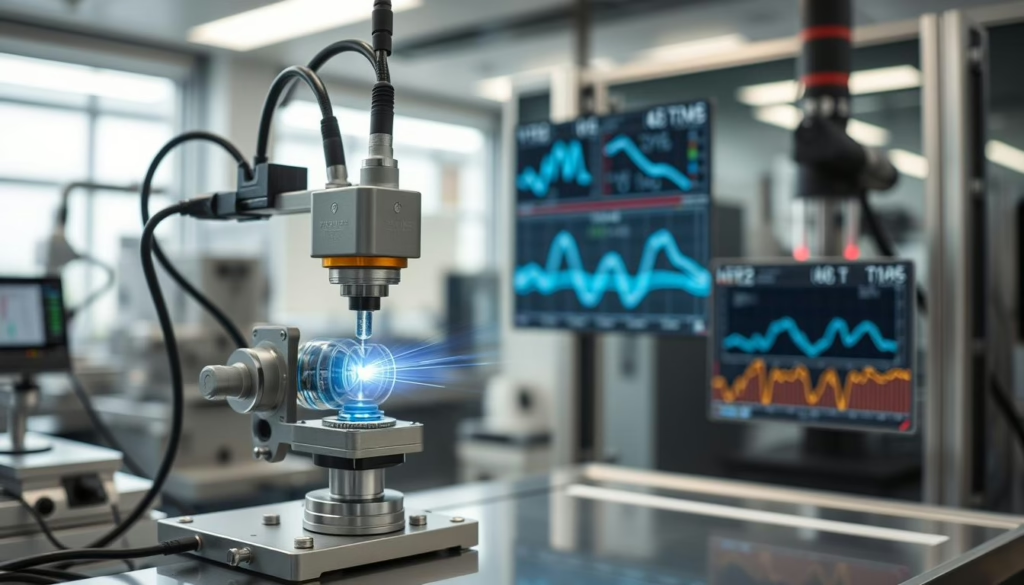Finding the right 2 axis force sensor for your needs. It’s all about measuring force accurately in two directions. At XJCSENSOR, we cater to a wide range of industries, from robotics to automotive testing. Our aim? To ensure your project benefits from reliable and precise sensor technology.
Key Takeaways
- Choosing the appropriate 2 axis force sensor is critical for precise force measurements.
- XJCSENSOR sensors cater to diverse applications in robotics and automotive testing.
- Key features include reliability and accuracy to support various projects.
- Advanced dual-axis force sensing technology ensures optimal performance.
- Our solutions are designed to meet specific industry needs effectively.
Understanding 2 Axis Force Sensors
Nowadays, 2 axis force sensors are vital in many areas. They measure forces in two directions at once, giving accurate results for different uses. By using these sensors, industries can become more precise and efficient.
What is a 2 Axis Force Sensor?
A 2 axis force sensor measures forces on the X and Y axes. It’s key in many fields, like industrial automation and labs. These sensors allow for better control and accuracy, improving outcomes in tasks that need force direction to be measured.
Applications of 2 Axis Force Sensors
These sensors are used in many ways. For example, in robotics, they help control how a robot grips things. The automotive industry uses them to test brakes, ensuring vehicles are safe. They also make electronics like phones more user-friendly by improving touch sensitivity.
In the health sector, they’re used for very precise surgeries and in making better rehab equipment. This shows how crucial 2 axis force sensors are in advancing technology across fields. Their wide use highlights their importance and flexibility.
Key Features to Look for in a Dual Axis Force Transducer
When choosing a dual axis force transducer, focus on key features for the best performance. High precision and durability are crucial. They make these sensors more useful and reliable.
Accuracy and Precision
For tasks needing exact measurements, a high precision dual axis force sensor is essential. Industry standards set specific accuracy levels. Make sure your choice meets or beats these requirements. High-end options provide great resolution and low hysteresis. This means you get reliable data consistently.
Durability and Toughness
The toughness of the sensor is also key. It should work well even in very tough conditions without performance drops. XJCSENSOR’s long-term heavy industry clients vouch for their load cells’ robustness, even in harsh settings. This kind of durability means the sensors last longer. So, there’s no need for frequent replacements, saving money in the long run.
Looking at both accuracy and durability is smart when picking a 2 axis load cell. It ensures you get precise data and a device that can handle tough conditions.
| Feature | Importance | Example |
|---|---|---|
| Accuracy | High | Meets industry standards |
| Precision | High | Minimal hysteresis |
| Durability | High | Excellent under harsh conditions |
| Toughness | High | Long lifespan |
Benefits of Using a Top-Rated 2 Axis Force Gauge
Investing in a top-rated 2 axis force gauge is crucial for precise force analysis in industries. Such a gauge ensures enhanced performance. It enables us to get consistent, accurate results, maintaining high-quality operations.
These gauges are also built to last. Their durability means they can handle tough conditions without losing accuracy. In the long run, they save money on replacements and upkeep.
Users often praise these gauges for their reliable performance. This feedback highlights the importance of having a trustworthy two-axis force gauge. It helps us meet our goals effectively.

These tools fit perfectly in various industrial activities. They’re invaluable in manufacturing, quality control, or R&D. The precise data they provide guides better decisions. This enhances our efficiency and output.
| Benefit | Details |
|---|---|
| Enhanced Performance | Achieves consistent and accurate results |
| Increased Longevity | Durable design ensures extended use |
| Greater Return on Investment | Reduced costs from less frequent replacements and maintenance |
Why High Precision Dual Axis Force Sensors are Essential
In high-stakes environments, precision is crucial. High precision dual axis force sensors ensure better data collection and reduce mistakes. They are vital in areas like aerospace and biomechanics where errors can’t be afforded.
Ensuring Accurate Data Collection
Getting the right data every time is key for any critical task. Our dual axis force transducer helps keep data consistent. Studies have shown that these sensors give reliable and steady results, proving essential in both research and industry.
Reducing Measurement Errors
Minimizing mistakes is important where safety and accuracy matter most. A detailed aerospace study showed our sophisticated sensor meets strict safety standards.
Here’s a quick look at the benefits of using high precision dual axis force sensors:
| Feature | Benefit |
|---|---|
| High Precision | Ensures accurate data collection, reducing variance |
| Robust Design | Minimizes measurement errors in demanding environments |
| Advanced Technology | Offers reliability across diverse applications |
To sum up, our cutting-edge sensor excels in delivering accuracy and dependability, proving its worth in tech-intensive fields.
Comparing Leading Two Axis Force Measurement Devices
Choosing the right two axis force measurement device is key. Look at their sensor range, sensitivity, and data output formats. These features show how well they work and are reliable. Top devices excel in these areas, bettering dual-axis force tech usage.
We’ve put together a deep dive on top sensors from reports and feedback. This analysis helps find the best device for your needs. It ensures your choice is precise, affordable, and meets high standards.
| Device | Sensor Range | Sensitivity | Data Output Formats |
|---|---|---|---|
| Honeywell Model 41 | 0-1000 lbs | High | Analog, Digital |
| Futek LSB200 | 0-500 lbs | Ultra High | Analog, USB |
| Interface SMT1 | 0-200 lbs | High | Analog |
Experts often suggest the Honeywell Model 41 for its wide range and dual outputs. The Futek LSB200 is known for its top sensitivity, great for precise needs. The Interface SMT1 is noted for its strong design and steady analog output.
This side-by-side look helps pick features that match tech advances in dual-axis force detection. It ensures the chosen sensor gives the best results in different settings.
Advanced Dual Component Force Sensor Technologies
Force measurement has taken a big step with advanced dual component force sensor tech. Innovative materials and cutting-edge designs are key. They push performance higher, especially in top 2 axis load cell options.
Sensor Material and Design
Top-grade alloys and tiny tech (MEMS) change the game in sensor materials and designs. They bring better durability, precision, and small size. Now, sensors are not just reliable but fit tough uses too. Companies like XJCSENSOR use these materials for better products.
Data Integration Capabilities
A big plus of this sensor tech is how it fits with current systems. Sensors give quick and smart data use. For firms, this means sharper measures and faster choices. It’s great for automation with needs for speed and accuracy.
Here is a comparative look at some key attributes:
| Material | Design Innovation | Data Integration |
|---|---|---|
| Aerospace-Grade Alloys | MEMS Technology | Real-Time Analytics |
| High Tensile Strength | Miniaturized Components | Seamless System Integration |
| Corrosion Resistance | Enhanced Durability | Accurate Data Processing |
Evaluating Reliable Two-Axis Force Testing Instruments
Choosing a reliable two-axis force testing instrument requires careful thought. You must look at the maker’s adherence to global standards and certifications. Also, how much support they provide is key. A certified instrument, sticking to quality rules, works better and is more reliable.
XJCSENSOR stands out with high-quality two-axis force gauges. These meet international precision benchmarks. They also provide detailed documentation, proving their commitment to quality and safety. This makes users trust the reliability of their products.
The support you get after buying an reliable two-axis force testing instrument is just as important. XJCSENSOR shines here too, with services like help with problems, technical guidance, and maintenance. They’re known for their great customer care. This includes quick responses and thorough after-sales help.
| Brand | Certification | User Support |
|---|---|---|
| XJCSENSOR | ISO 9001 Certified | 24/7 Customer Support |
| Competitor A | ISO 14001 Certified | Email Support Only |
In conclusion, picking the best top-rated 2 axis force gauge isn’t easy. You must check the product’s certifications, how reliable it is, and the support the maker offers. Doing so ensures you get an instrument that’s both accurate and reliable for any task.
Selecting the Best 2 Axis Load Cell for Specific Applications
Choosing the best 2 axis load cell requires attention to load capacity and environmental conditions. These factors hugely impact the device’s performance and durability.
Consideration of Load Capacity
The main thing to consider is the load cell’s capacity. It’s key to make sure the device can handle the load without issues. Manuals often offer use-specific guidance, helping match the sensor to the task.
Environmental Factors and Suitability
It’s also critical to think about how the device holds up in different environments. Temperature, humidity, and corrosive materials can all change how well it works and lasts. Technical articles review various models in tough conditions, showing which ones are most reliable. For specifics and advice on choosing, check out XJCSENSOR’s offerings.
| Model | Load Capacity | Environmental Suitability |
|---|---|---|
| Model A | 0-500 N | Temperature and Humidity Resistant |
| Model B | 0-1000 N | Corrosion Resistant |
| Model C | 0-1500 N | High Temperature Resistant |
Why Choose XJCSENSOR for Your 2 axis force sensor for your needs?
Finding the right 2 axis force sensor might seem hard. But, XJCSENSOR shines as a top choice in sensor tech. We have a rich history of innovation and quality. Our sensors work great in many applications, pleasing lots of clients.
Why is XJCSENSOR a great choice? It’s about top tech and great support. Our products are designed to be accurate and dependable. They meet your needs perfectly.
- Industry-Leading Technology: XJCSENSOR uses the latest technology for better accuracy and strength.
- Custom Solutions: XJCSENSOR makes custom 2 axis force sensors to fit your specific needs.
- Customer Testimonials: Our customers in various fields have seen big improvements in accuracy and efficiency.
- Exceptional Support: Our support team helps you use your sensor perfectly, making sure it fits into your work smoothly.
Here’s a quick look at why XJCSENSOR stands out:
| Feature | Benefit |
|---|---|
| High Accuracy | Ensures precise measurement and data reliability |
| Customization | Tailored solutions for specific application requirements |
| Client Satisfaction | Positive testimonials from multiple industry sectors |
| Support Services | Expert assistance and seamless integration |
In the end, XJCSENSOR isn’t just a sensor supplier. We’re a partner, focused on boosting your work and ensuring top-notch performance.
Conclusion
Choosing the right dual axis force transducer is key to precise force measurement. We’ve covered the basics, applications, and key features. By knowing the role of accuracy and durability, and the advantages of top gauges, you can choose wisely.
To select the best dual axis force sensor, consider factors like load capacity and the environment. Whether you work in manufacturing, automotive, or aerospace, using dependable advanced solutions is crucial. This ensures operational integrity and accurate data collection.
At XJCSENSOR, our focus is on delivering top-quality dual-axis force measurement tools. Our advanced sensor technology and customer-first approach highlight our commitment to excellence. For more insights on strain gauges versus force sensors, check out more here. We aim to provide solutions tailored to your project, promising top performance and reliability.





